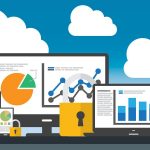Big data ¦ It is the buzzword we all have been hearing for a while, but what does it mean and how can it help businesses? Let's start with the definition. Big data refers to huge volumes and types of valuable information that companies accumulate through cutting-edge technology. The data is acquired from both, internal (within your company) and external sources (customers, … [Read more...] about What is Big Data and How Leading Organisations Are Playing Big with It?
Big Data
Learn everything you need to know about big data. Find out how companies are using this revolutionary technology and what it means for your business strategy.
3 Data Trends Driving Online Decision Making
As technology advances, increased sources of data are becoming key resources for understanding complex behavior patterns and making accurate decisions. While companies have long been collecting and buying aggregate information, consumers have not always had this luxury. Despite the proliferation of information online, consumers still have to weed out data that may be inaccurate … [Read more...] about 3 Data Trends Driving Online Decision Making
Data analytics Simplified: Use Storytelling to get your message across
An integral part of data analytics is the use of perspective analysis to arrive at a result. This understanding can be conveyed in many forms primarily being data. It might work well for your company since your staff is used to crunch data but maybe not for your customers. So, how do you convey your data in a compelling way? Through Storytelling Consider this: Data through the … [Read more...] about Data analytics Simplified: Use Storytelling to get your message across
4 Insights on the $170 Billion Smart Home Industry
The smart home industry is growing exponentially and this is attributed to the revolutionary advancements in the loT market; to meet the constant consumer need of convenience, security, safety, and energy saving solutions. According to the Markets and Markets Report, the Internet of Things market is expected to grow from USD 170.57 Billion in 2017 to USD 561.04 Billion by 2022. … [Read more...] about 4 Insights on the $170 Billion Smart Home Industry
How Big Data Helps Us Design Better Vehicles
Manufacturers are relying on data more than ever, and drawing inspiration from physics, driver behavior, and statistics to design better vehicles. The more data we're able to collect, analyze, and turn into actionable insights, the more advanced our consumer and commercial vehicles will become. But how are data analysts and engineers working together to bring us better-designed … [Read more...] about How Big Data Helps Us Design Better Vehicles
What is big data?
Big data is a term that refers to the massive amount of digital data created and shared every day. Big data can transform how we live, work, and communicate. It can be used to improve everything from public health and urban planning to business and marketing.
Big data is also changing the way we think about privacy and security. The volume, velocity, and variety of big data present challenges and opportunities for organizations and individuals. Regardless, big data is here to stay, and its impact will only continue to grow in the years to come.
What is big data analytics?
Big data analytics is the process of turning large, complex data sets into actionable insights. Businesses use various analytical tools and techniques, including machine learning and statistical analysis, to do this.
Big data analytics can be used to improve decision-making in areas like marketing, operations, and customer service. It can also be used to identify new business opportunities and optimize existing processes. With the help of big data analysis, businesses can gain a competitive edge by using their data better.
Want to learn more about big data? Datafloq has courses available. Contact us to get started.
When was big data introduced?
The term big data was coined in the 1990s, with some giving credit to John Mashey for popularizing the term. However, the concept of big data has been around for much longer.
Where does big data come from?
In the early days of computing, scientists and businesses began to realize that the amount of data being generated was increasing exponentially. As a result, they began to develop new methods for storing and processing data.
Over time, these methods have become increasingly sophisticated and have played a key role in enabling businesses to make sense of vast amounts of information. Today, big data is used in various industries, from retail to healthcare, and its importance is only likely to grow in the years to come.
What are examples of big data?
One of the most common examples of big data is social media data. With over 2 billion active users, Facebook generates a huge amount of data every day. This includes information on user interactions, posts, and even location data. Analyzing this data can help companies better understand their customers and target their marketing efforts.
Another example of big data is GPS signals. These signals are constantly being generated by devices like cell phones and fitness trackers. When combined with other data sets, GPS signals can be used to provide insights into everything from traffic patterns to human behavior. Finally, weather patterns are another type of big data set. By tracking these patterns over time, scientists can better understand the impact of climate change and develop strategies for mitigating its effects.
How do companies use big data?
Companies use big data in marketing, product development, and customer service. By analyzing large data sets, businesses can identify patterns and trends that would be otherwise difficult to spot. For example, a company might use big data to track customer behavior patterns to improve its marketing efforts.
Alternatively, a company might use big data to improve its products by identifying areas where customers are most likely to experience problems. For instance, big data can be used to improve customer service by finding pain points in the customer journey. Ultimately, big data provides companies with a valuable tool for gaining insights into their business operations.






